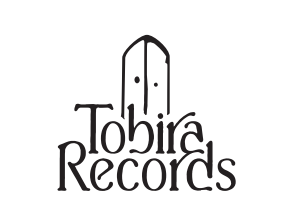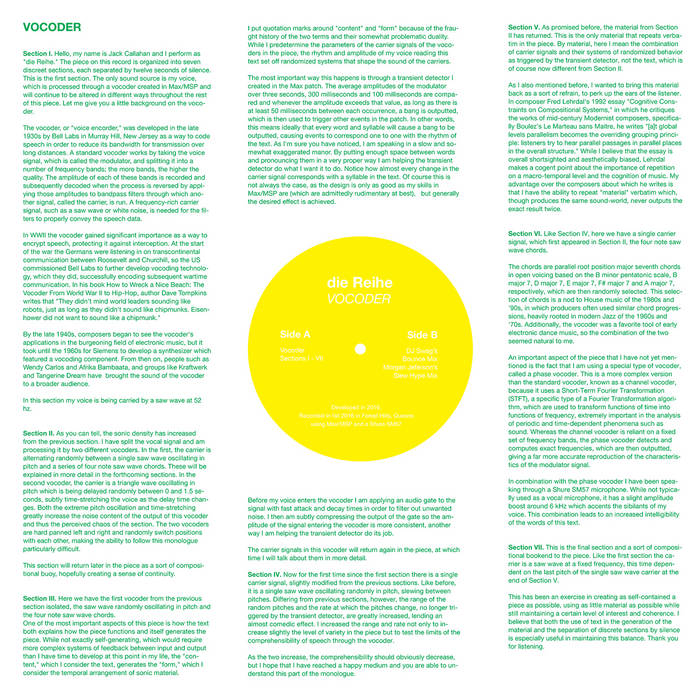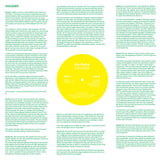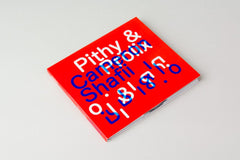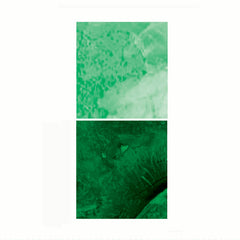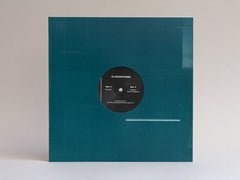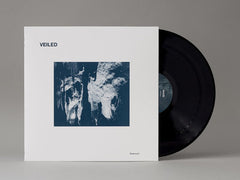die Reihe // Vocoder 12 "
- Availability:
Experimental label in Barcelona, SpainanomieWe have received a large amount of various works.
This work was released in 2018 by Jack Callahan aka die Reihe released from Flea, feeding tube, NNA Tapes, etc. 12 ". As the title suggests, it is a record with strong experimental elements using the entire Vocoder. DL code Included.
Labels and other worksplease use this form. ///Click here to see more Anomia releases available at Tobira.
--------------------------
Description by Anomia:
"His first new release since 2016's Housed, die Reihe, America's lovable sonic provocateur, returns with VOCODER, a 12 ”record on Anòmia which features a new piece on side A and two exciting dance remixes by up-and-coming producers on side B. Using only voice and a vocoder created in Max / MSP, the piece “VOCODER” is “an exercise in creating as self-contained a piece as possible, using as little material as possible while still maintaining a certain level of interest and coherence.” For fans of Alvin Lucier, John Baldessari and Bruce Haack. "
Intro to text by Jack Callagan (die Reihe):
"Section I. Hello, my name is Jack Callahan and I perform as "die Reihe." The piece on this record is organized into seven discreet sections, each separated by twelve seconds of silence. This is the first section. The only sound source is Let me give you a little background on the vocoder. Let me give you a little background on the vocoder. My voice, which is processed through a vocoder created in Max / MSP and will continue to be altered in different ways throughout the rest of this piece.
The vocoder, or "voice encoder," was developed in the late 1930s by Bell Labs in Murray Hill, New Jersey as a way to code speech in order to reduce its bandwidth for transmission over long distances. A standard vocoder works by taking the voice signal, which is called the modulator, and splitting it into a number of frequency bands; the more bands, the higher the quality. The encoder of each of these bands is recorded and subsequently decoded when the process is reversed by applying those encoders to bandpass filters through which another signal, called the carrier, is run. A frequency-rich carrier signal, such as a saw wave or white noise, is needed for the filters to properly convey the speech data.
In WWII the vocoder gained significant importance as a way to encrypt speech, protecting it against interception. The start of the war the Germans were listening in on transcontinental communication between Roosevelt and Churchill, so the US commissioned Bell Labs to further develop vocoding technology, which they did, successfully encoding subsequent wartime communication. In his book How to Wreck a Nice Beach: The Vocoder From World War II to Hip-Hop, author Dave Tompkins writes that "They didn't mind world leaders sounding like robots, just as long as they didn't sound like chipmunks. Eisenhower did not want to sound like a chipmunk. "
By the late 1940s, composers began to see the vocoder's applications in the burgeoning field of electronic music, but it took until the 1960s for Siemens to develop a synthesizer which featured a vocoding component. From then on, people such as Wendy Carlos and Afrika Bambaata , and groups like Kraftwerk and Tangerine Dream have brought the sound of the vocoder to a broader audience.
In this section my voice is being carried by a saw wave at 52 hz. "
Artist: die Reihe
Label: Anomia
Experimental label in Barcelona, SpainanomieWe have received a large amount of various works.
This work was released in 2018 by Jack Callahan aka die Reihe released from Flea, feeding tube, NNA Tapes, etc. 12 ". As the title suggests, it is a record with strong experimental elements using the entire Vocoder. DL code Included.
Labels and other worksplease use this form. ///Click here to see more Anomia releases available at Tobira.
--------------------------
Description by Anomia:
"His first new release since 2016's Housed, die Reihe, America's lovable sonic provocateur, returns with VOCODER, a 12 ”record on Anòmia which features a new piece on side A and two exciting dance remixes by up-and-coming producers on side B. Using only voice and a vocoder created in Max / MSP, the piece “VOCODER” is “an exercise in creating as self-contained a piece as possible, using as little material as possible while still maintaining a certain level of interest and coherence.” For fans of Alvin Lucier, John Baldessari and Bruce Haack. "
Intro to text by Jack Callagan (die Reihe):
"Section I. Hello, my name is Jack Callahan and I perform as "die Reihe." The piece on this record is organized into seven discreet sections, each separated by twelve seconds of silence. This is the first section. The only sound source is Let me give you a little background on the vocoder. Let me give you a little background on the vocoder. My voice, which is processed through a vocoder created in Max / MSP and will continue to be altered in different ways throughout the rest of this piece.
The vocoder, or "voice encoder," was developed in the late 1930s by Bell Labs in Murray Hill, New Jersey as a way to code speech in order to reduce its bandwidth for transmission over long distances. A standard vocoder works by taking the voice signal, which is called the modulator, and splitting it into a number of frequency bands; the more bands, the higher the quality. The encoder of each of these bands is recorded and subsequently decoded when the process is reversed by applying those encoders to bandpass filters through which another signal, called the carrier, is run. A frequency-rich carrier signal, such as a saw wave or white noise, is needed for the filters to properly convey the speech data.
In WWII the vocoder gained significant importance as a way to encrypt speech, protecting it against interception. The start of the war the Germans were listening in on transcontinental communication between Roosevelt and Churchill, so the US commissioned Bell Labs to further develop vocoding technology, which they did, successfully encoding subsequent wartime communication. In his book How to Wreck a Nice Beach: The Vocoder From World War II to Hip-Hop, author Dave Tompkins writes that "They didn't mind world leaders sounding like robots, just as long as they didn't sound like chipmunks. Eisenhower did not want to sound like a chipmunk. "
By the late 1940s, composers began to see the vocoder's applications in the burgeoning field of electronic music, but it took until the 1960s for Siemens to develop a synthesizer which featured a vocoding component. From then on, people such as Wendy Carlos and Afrika Bambaata , and groups like Kraftwerk and Tangerine Dream have brought the sound of the vocoder to a broader audience.
In this section my voice is being carried by a saw wave at 52 hz. "
Artist: die Reihe
Label: Anomia
